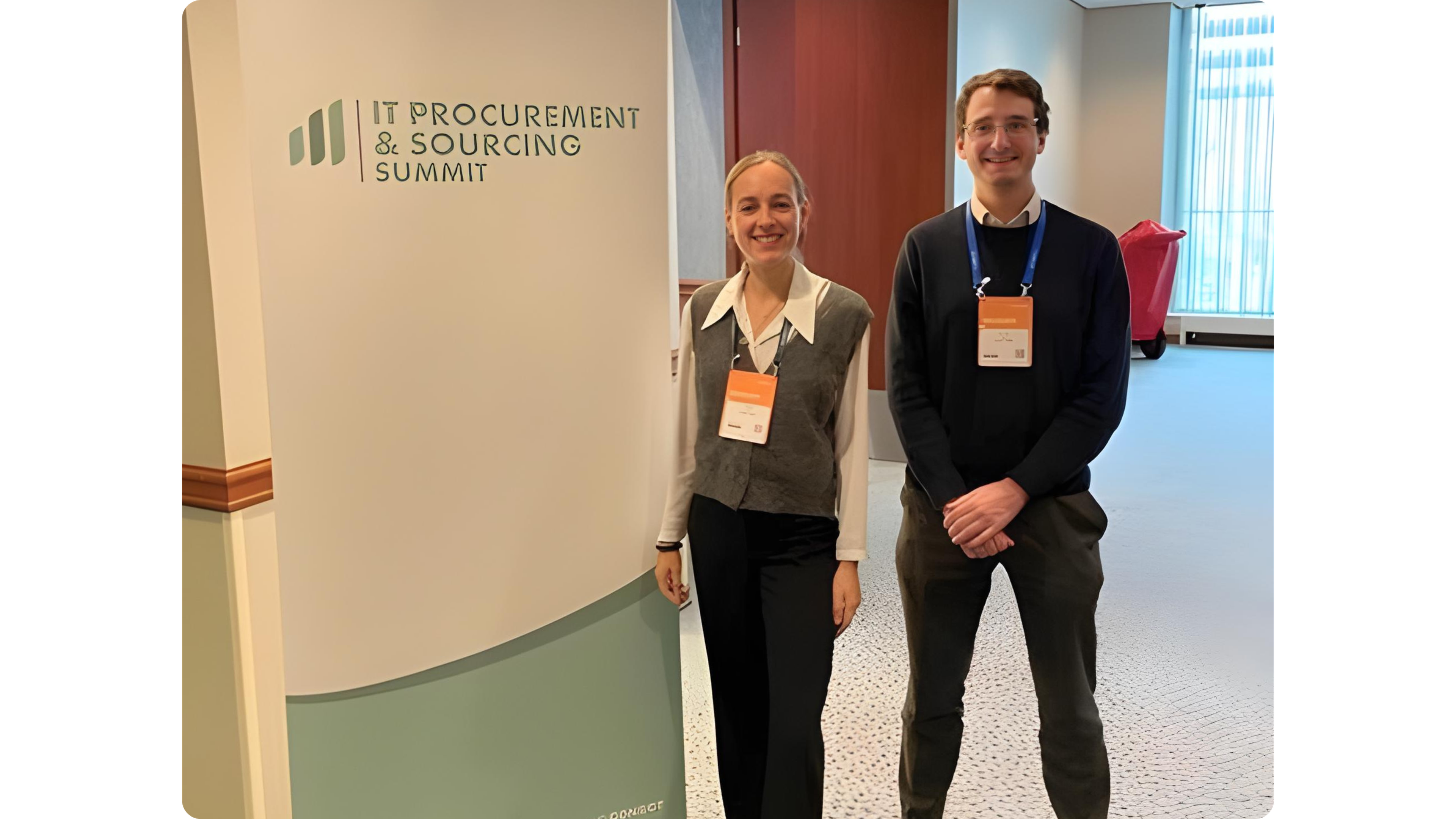Organizations today need tools capable of making their purchasing processes more fluid, more transparent, and more efficient. But behind the digitalization of Procurement lies a reality: not all solutions address the same challenges.
The digitalization of Procurement today brings together a wide variety of tools. Among them, e-procurement solutions structure the overall purchasing process, while VMS focus on a particularly demanding category: professional services.
These tools do not overlap: they operate at different levels of the purchasing cycle and naturally complement each other. Better understanding their respective roles enables Procurement Departments to combine operational rigor and business performance.
E-procurement tools: the structure and rigor of the purchasing process
E-procurement solutions are now essential for Procurement Departments. They make it possible to centralize transactional processes, standardize practices, and ensure spending compliance on a global scale.
Concretely, these tools cover all stages of the purchasing cycle, from the internal request to the validation of the purchase order and the supplier payment.
Their main strength is guaranteeing budget control and the traceability of financial flows, while simplifying administrative tasks. Finance Departments see them as a governance tool, capable of offering a consolidated view of global spending.
But this strength is also their limitation. Because they aim to standardize the entire purchasing process, e-procurement platforms do not cover the operational granularity required for certain complex categories. Professional services, for example, rely on assignments, deliverables, profiles, and evolving pricing models that require a level of flexibility and tracking that a generalist tool is not designed to provide.
E-procurement tools do not lack features: they are deliberately designed to standardize, not to specialize. Their business architecture targets financial consistency rather than the detailed management of assignments, profiles, or deliverables.
The Vendor Management System: specialization in the service of performance
This is precisely where the Vendor Management System (VMS) stands out.
Far from being a simple complementary module, the VMS is designed to absorb the complexity of professional services. It handles the entire lifecycle of external providers: sourcing, contracting, mission tracking, and reporting.
A VMS like Eleven VMS centralizes all information related to professional services, whether time-and-materials assignments or fixed-price engagements. It consolidates profiles, skills, deliverables, contractual milestones, pricing models, budgets, performance commitments, associated contracts...
This centralization gives Procurement Departments immediate and reliable visibility over their supplier ecosystem, while automating key steps: mission validation, deliverable and milestone tracking, renewals, budget alerts, contractual compliance, invoicing, and reconciliation.
But the true strength of the VMS lies in its ability to transform data into strategic steering. Thanks to dynamic dashboards and indicators specific to professional services, it becomes possible to analyze provider performance, measure compliance with rate cards, evaluate the quality of completed missions, and adjust the supplier panel in real time.
This tailored approach also ensures contractual and legal compliance, a major issue for long, multi-country, or results-based engagements.
E-procurement and VMS: two complementary visions
E-procurement and VMS respond to two different but perfectly compatible logics:
· The first is generalist: it structures purchasing processes and guarantees financial consistency.
· The second is specialized: it manages the complexity of professional services and optimizes the relationship with providers.
In other words, e-procurement frames the spending, while the VMS creates value from the service itself.
Where the first often stops at the purchase order, the second supports the complete mission lifecycle, in time-and-materials or fixed-price, up to invoicing and results evaluation.
In a large organization, these two tools naturally coexist. The VMS complements the macro view of e-procurement by bringing essential granularity for understanding professional services spending. Together, they enable Procurement Departments to obtain an integrated and coherent view of their external engagements, while facilitating collaboration between Procurement, Finance, and Suppliers.
In practice, this complementarity relies on a simple integration between both platforms. E-procurement continues to manage the request, the order, and overall invoicing, while the VMS handles the operational detail of the service: assignment, deliverables, profiles, milestones, compliance, and performance. Key information circulates automatically between both tools, avoiding duplicate entries and ensuring perfect consistency between contract, execution, and invoicing.
The flow is simple:
The request or need is triggered in e-procurement.
The VMS manages operational oversight: assignment, deliverables, profiles, milestones, validations, and compliance.
Key data (order, amounts, consumed, invoicing elements) is automatically sent back into e-procurement.
This process avoids duplicate entries and ensures ideal alignment between order, execution, and invoicing.
The VMS, a strategic lever at the heart of Procurement transformation
Adopting a VMS first allows for more finely structuring provider management and service tracking.
A powerful tool like Eleven VMS does not simply automate administrative tasks; it allows Procurement and Operational teams to align objectives, strengthen internal collaboration, and transform data into a true decision-making engine.
By offering better visibility over performance, costs, and compliance, the VMS helps Procurement Departments shift from a monitoring mindset to a steering mindset. It enables them to act as strategic business partners, capable of anticipating needs, securing risks, and optimizing the value generated by each mission.
Complementarity in the service of performance
There is no competition between VMS and e-procurement. Both approaches pursue the same goal: helping companies better control their purchasing. Their difference lies in their scope. The VMS responds to a need for precision, flexibility, and business-oriented steering that generalist tools cannot provide. E-procurement remains essential to ensure overall coherence in the purchasing process.
The most successful companies are those that have managed to make these two worlds work together. By integrating a VMS into their e-procurement ecosystem, they benefit from both financial rigor and operational agility. This complementarity paves the way for a new generation of Procurement: digitalized, collaborative, and performance-driven.
To go further and discover how a VMS can transform the way you manage professional services, download the white paper “Understanding the Vendor Management System” from Eleven VMS.



